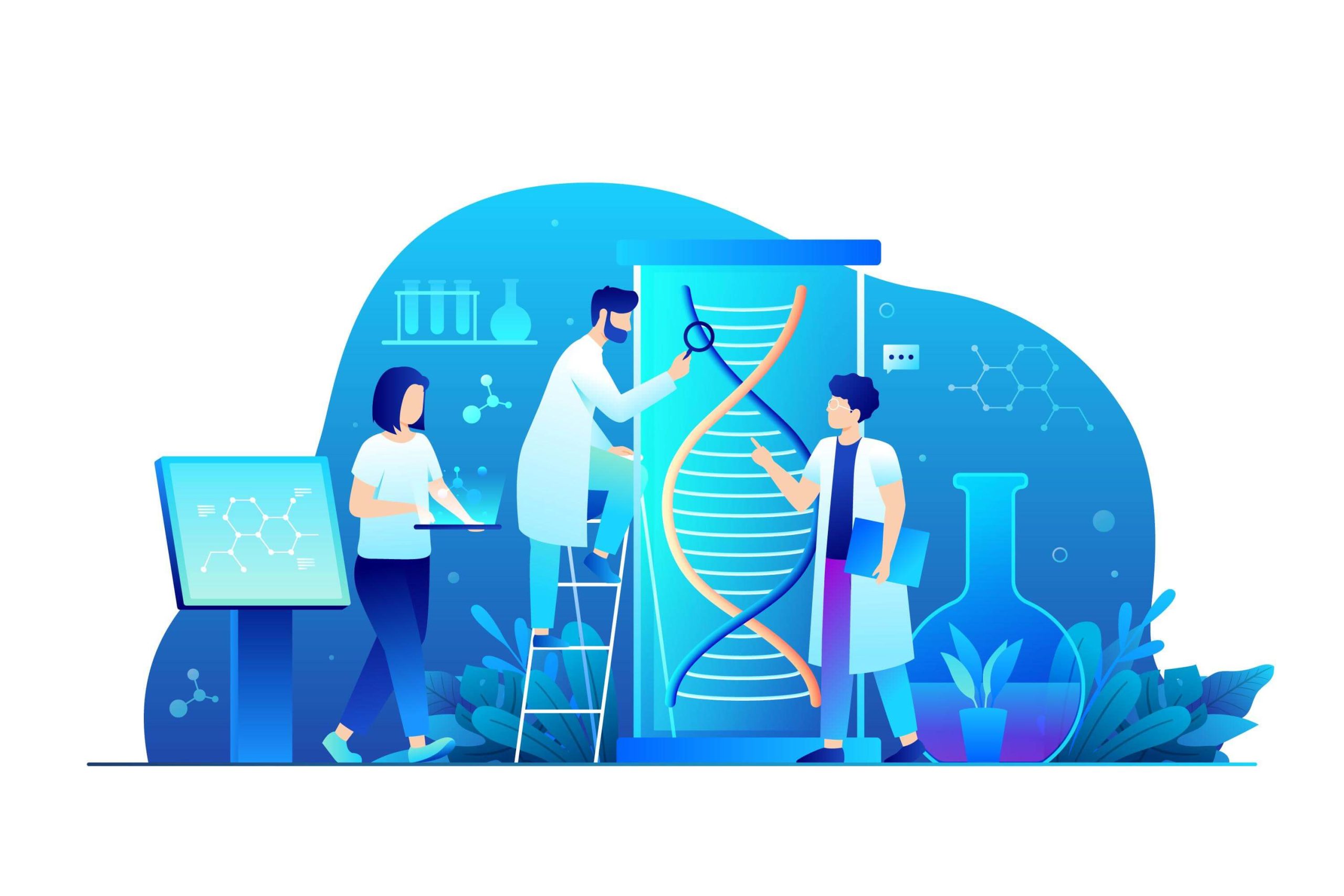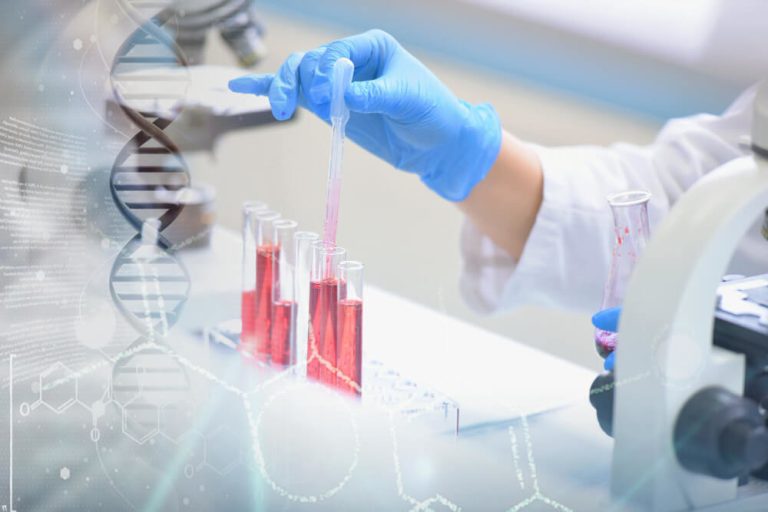The Ultimate Guide to a Longevity Clinic: Reclaiming Your Biological Age
We all share a fundamental desire to live not just longer, but better. For centuries, the conversation around aging focused almost exclusively on lifespan, the total number of years we are alive. But a new, more vital conversation is emerging, one centered on healthspan, the number of years we live in good health, free from chronic disease and full of vitality. This paradigm shift is the driving force behind one of the most exciting fields in modern healthcare.
Enter the world of the longevity clinic. This is not your typical doctor’s office. Instead of waiting for sickness to appear and then treating symptoms, a longevity clinic operates on the principle of proactive, preventative, and personalized medicine. Its goal is to understand your unique biology on a deep, cellular level and provide a roadmap to optimize your health, slow the aging process, and dramatically extend your healthspan.
Imagine a healthcare model where the primary objective is to keep you healthy, rather than just manage illness. This is the promise of longevity medicine. It leverages cutting-edge science and diagnostics to move beyond the one-size-fits-all approach of traditional healthcare, empowering you to take control of your aging journey.

What Exactly Is a Longevity Clinic?
A longevity clinic is a specialized medical practice focused on the science of health optimization and anti-aging. It views the body as an interconnected system and uses a data-driven approach to identify and address the root causes of aging and disease before they manifest as serious health issues.
The philosophy is simple yet profound: aging is not an inevitable decline but a process that can be understood and modulated. These clinics aim to decrease your biological age, which is a measure of your body’s health at a cellular and molecular level, as opposed to your chronological age, which is simply the number of years you have been alive.
Unlike traditional medicine, which is often reactive, longevity medicine is preemptive. A conventional doctor might prescribe medication for high blood pressure once it’s diagnosed. A longevity physician, however, will use advanced diagnostics to identify the subtle metabolic, genetic, and lifestyle factors that could lead to high blood pressure ten or twenty years down the line, and then create a plan to correct them now.
This forward-thinking approach is built on the pillars of geroscience, the study of the biology of aging. It seeks to target the fundamental hallmarks of aging, such as cellular senescence, mitochondrial dysfunction, and epigenetic alterations, to improve overall health and resilience.

What Can You Expect During Your First Visit?
Stepping into a longevity clinic for the first time is a unique experience. The initial phase is all about deep data collection. This is not a quick 15-minute check-up; it’s a comprehensive deep dive into your entire biological system. Your first appointment will likely be an extensive consultation where the physician spends significant time understanding your health history, family history, lifestyle, diet, stress levels, and personal health goals.
This conversation is the foundation upon which your personalized plan will be built. The clinic wants to understand not just what is happening in your body, but why it’s happening. Following this in-depth discussion, you will undergo a battery of advanced diagnostic tests that go far beyond what you would find in a standard physical.

What kind of tests are performed?
The diagnostic process is the cornerstone of longevity medicine. The goal is to create a complete, high-resolution picture of your current health status. While the specific tests will vary based on the clinic and your individual needs, they often include a wide array of cutting-edge assessments.
Comprehensive blood panels are standard, but they look at a much wider range of biomarkers than a typical blood test. This includes in-depth analysis of inflammatory markers, a full hormone panel, extensive vitamin and mineral levels, advanced cardiovascular risk markers, and metabolic health indicators.
Genetic testing, or genomics, is also a key component. This helps identify your genetic predispositions to certain conditions, how your body processes nutrients, and which types of diet or exercise might be most effective for you. It provides a foundational blueprint of your health potential.
Perhaps most importantly, many clinics use epigenetic testing. These tests, often called biological age clocks, measure chemical modifications to your DNA that reflect how your lifestyle and environment have impacted your genes. This provides a tangible metric of your biological age and a baseline to track the success of your interventions.
Other common tests can include microbiome analysis to assess gut health, continuous glucose monitoring to see how your body responds to food in real-time, and advanced imaging like body composition scans or calcium scores to check for arterial plaque.

How is a personalized plan created?
Once all the data is collected and analyzed, the real work begins. Your longevity physician and their team will synthesize this wealth of information into a completely personalized health protocol. This is not a generic handout with advice to ‘eat better and exercise more’. It is a detailed, actionable roadmap tailored specifically to your biology, genetics, and goals.
Your plan will cover multiple domains of health. It will likely include highly specific nutritional guidelines, detailing not just what to eat but potentially when to eat, based on your metabolic data. It will also outline a precise exercise regimen, targeting the right mix of cardiovascular, strength, and mobility training for your body.
Supplement recommendations will be targeted and precise, designed to correct specific deficiencies or support particular biological pathways identified in your testing. The plan will also address other critical lifestyle factors, providing strategies for improving sleep quality, managing stress, and minimizing exposure to environmental toxins.
This comprehensive plan is your starting point. It is a living document that will be adjusted and refined over time as you make progress and your body’s needs change.

What Core Services Do Longevity Clinics Offer?
Longevity clinics provide a suite of services that extend far beyond the initial consultation and plan. These services are the tools used to execute your personalized protocol and are designed to optimize health from every possible angle.

Do they focus on nutrition and lifestyle?
Yes, this is the absolute foundation. You cannot supplement or treat your way out of a poor diet and unhealthy lifestyle. Clinics provide expert guidance and coaching on nutritional strategies, which might include specific therapeutic diets like the ketogenic diet, the Mediterranean diet, or protocols involving intermittent fasting or time-restricted eating. The goal is to find the sustainable approach that best controls inflammation, optimizes metabolism, and nourishes your body at a cellular level.
Lifestyle coaching is equally critical. This involves creating concrete strategies for stress reduction, such as meditation or breathwork practices. It also includes a major focus on sleep hygiene, as sleep is when the body performs most of its critical repair and regeneration processes. The clinic’s team works with you to build healthy, lasting habits in these areas.

What about advanced therapies and treatments?
Beyond the foundational lifestyle elements, longevity clinics offer a range of advanced medical interventions. These are deployed based on your specific diagnostic results and health needs. One common service is Bioidentical Hormone Replacement Therapy (BHRT). As we age, hormone levels naturally decline, leading to symptoms like fatigue, weight gain, and cognitive fog. BHRT aims to restore these hormones to youthful, optimal levels to improve vitality and prevent age-related decline.
Peptide therapy is another rapidly growing area. Peptides are small chains of amino acids that act as signaling molecules in the body. Specific peptides can be used to promote tissue repair, reduce inflammation, improve immune function, or enhance cognitive performance. They offer a highly targeted way to influence the body’s own healing mechanisms.
Intravenous (IV) nutrient therapy is also frequently used to deliver high doses of vitamins, minerals, and antioxidants directly into the bloodstream, bypassing the digestive system for maximum absorption. This can be used to correct deficiencies quickly, boost the immune system, or support detoxification. Some clinics also delve into regenerative medicine, offering treatments that use the body’s own healing potential, a field that includes therapies for complex conditions. For example, some clinics offer support for the advanced management of polycystic ovary syndrome (PCOS), integrating hormonal and metabolic strategies.

How do they track progress?
Longevity medicine is a dynamic and iterative process. Your initial plan is not set in stone. Continuous monitoring and data tracking are essential to ensure the interventions are working and to make adjustments as needed. This is where the business and clinical sides of the practice merge. Clinics rely on robust systems to monitor patient outcomes and ensure they are delivering on their promises, often tracking specific key performance indicators (KPIs) for a longevity practice to measure success.
Follow-up testing is performed at regular intervals to remeasure key biomarkers and, most importantly, your biological age. This allows both you and your physician to see tangible proof of progress. The goal is to see measurable improvements in your health data, demonstrating that the program is effectively slowing or even reversing the aging process at a cellular level.

Who Should Consider a Longevity Clinic?
There is a common misconception that longevity medicine is only for the very wealthy or those already in their senior years. In reality, the ideal time to start focusing on longevity is as early as possible. The clinic’s clientele is surprisingly diverse.
High-performers, executives, and athletes often seek out longevity clinics to optimize their physical and cognitive performance, gain a competitive edge, and enhance their resilience to stress. They are looking to operate at their absolute peak for as long as possible.
Individuals with a strong family history of chronic diseases like Alzheimer’s, heart disease, or cancer may come to a longevity clinic to be proactive. By understanding their genetic risks, they can implement targeted strategies to mitigate those risks and change their health destiny.
Many people in their 30s, 40s, and 50s visit a clinic when they begin to notice the first subtle signs of aging. They may be experiencing persistent fatigue, unexplained weight gain, brain fog, or a general sense that they have lost their vitality. They are looking for answers and solutions that go beyond what traditional medicine can offer.
Ultimately, anyone who is serious about investing in their future health and wants to take a proactive, science-backed approach to aging is a good candidate for a longevity clinic. It is for those who want to be the CEO of their own health.

How is Longevity Medicine Different from Functional or Traditional Medicine?
Understanding the distinctions between these medical approaches can help clarify the unique value of a longevity clinic. While they share some common ground, their ultimate goals and methodologies differ significantly.

What is the traditional medicine approach?
Conventional or traditional medicine is primarily a ‘sick-care’ system. It excels at treating acute illnesses, infections, and traumatic injuries. Its focus is on diagnosing a specific disease based on a set of symptoms and then managing or curing that disease, usually with pharmaceuticals or surgery. While essential for acute problems, it is less equipped to prevent the slow, chronic decline that characterizes aging.

How does functional medicine fit in?
Functional medicine represents a major evolution from the traditional model. It asks the critical question ‘why’ a person is sick. Rather than just naming a disease and prescribing a drug, it seeks to identify and address the underlying root causes of dysfunction in the body. Esteemed institutions like the Cleveland Clinic’s Center for Functional Medicine champion this systems-biology approach, looking at how diet, genetics, environment, and lifestyle factors interact to create health or disease. It is inherently personalized and patient-centered.

So, what makes longevity medicine unique?
Longevity medicine is the next step in this evolution. It takes all the principles of functional medicine—root cause analysis, systems thinking, and personalization—and applies them through the specific lens of aging and healthspan extension. While functional medicine focuses on restoring health, longevity medicine focuses on optimizing it and pushing the boundaries of what is possible for human performance and lifespan.
It actively incorporates geroscience, the research field dedicated to understanding the biological mechanisms of aging, with significant contributions from organizations like the National Institute on Aging. Longevity medicine is not just about getting you from sick to well; it is about getting you from well to ‘super-well’. It aims to make your 60s feel like your 40s by directly targeting the cellular processes that drive aging.

How Do You Choose the Right Longevity Clinic?
As the field grows, more clinics are emerging, and choosing the right one requires careful consideration. Not all clinics are created equal, and finding a good fit is crucial for success.

What qualifications should the medical team have?
Look for a clinic led by qualified medical professionals, such as Medical Doctors (MDs) or Doctors of Osteopathic Medicine (DOs), who have additional, specialized training and certification in areas like functional medicine, anti-aging medicine, or regenerative medicine. The team should be well-versed in interpreting advanced diagnostics like genetic and epigenetic tests.

What is the clinic’s approach and philosophy?
Investigate the clinic’s core philosophy. Do they offer truly bespoke programs, or do they push pre-packaged protocols on every patient? True longevity medicine is the epitome of personalized care. Leading medical centers have recognized this trend, with places like the Mayo Clinic’s Center for Individualized Medicine paving the way for care tailored to a person’s unique genetic makeup. The clinic you choose should share this commitment to deep personalization.

How do clinics collaborate with other doctors?
An excellent longevity clinic does not seek to replace your primary care physician or other specialists. Instead, it should work collaboratively as part of your overall healthcare team. Effective communication and a willingness to share information and coordinate care are hallmarks of a high-quality practice. This often requires a robust strategy for building a physician referral network to ensure seamless patient care across different specialties.

Are there different models of longevity clinics?
Yes, the models can vary. Some are boutique, in-person clinics offering high-touch, concierge-level service. Others are larger, tech-driven platforms that may offer services remotely. Companies that are pioneers like Wild Health use a combination of genomics, data analytics, and health coaching to deliver precision medicine at scale. Consider which model best suits your lifestyle, budget, and preference for interaction.

What is the Future of Longevity Medicine?
The field of longevity medicine is advancing at an incredible pace. The future promises even more powerful tools to enhance human healthspan. We are on the cusp of breakthroughs that were once the stuff of science fiction.
Artificial intelligence will play an increasingly larger role, analyzing vast datasets to predict disease risk and create hyper-personalized treatment plans with unparalleled precision. Advances in our ability to influence cellular health, potentially through therapies like partial cellular reprogramming, may one day allow us to truly reverse biological age in a significant way.
As technology improves and costs come down, these advanced diagnostics and therapies will become more accessible to a wider population. This will fuel a fundamental shift in our society’s approach to health, moving definitively from a reactive sick-care model to a proactive, preventative system focused on lifelong wellness.
The longevity clinic of today is the blueprint for the standard of healthcare of tomorrow. It represents a move toward empowered, data-driven health, where every individual has the tools and knowledge to live their longest, healthiest life possible.
This journey is about more than just adding years to your life; it is about adding life to your years. It is an investment in your most valuable asset: your own health and vitality.
Frequently Asked Questions

How can I ensure consistent patient experience and treatment quality across multiple clinic locations?
Maintaining a uniform standard of care is paramount when scaling your longevity clinic from a solo practice. The key is to systematize your unique approach by developing detailed Standard Operating Procedures (SOPs) for every clinical and administrative process, from the initial patient consultation to follow-up protocols. This documentation must be paired with a rigorous, centralized training program for all new hires, ensuring every team member, regardless of location, embodies your clinic’s core philosophy and service standards.
Beyond standardized procedures, fostering a unified company culture is critical for long-term consistency. Implement regular cross-location meetings for staff to share insights and best practices, and establish a clear quality assurance framework that includes periodic audits and performance reviews. Actively solicit and analyze patient feedback from all sites to quickly identify any deviations in the patient experience, allowing you to make targeted improvements and maintain the high-quality reputation you originally built.

What are the key financial indicators that signal my solo practice is ready for multi-site expansion?
Before expanding, your solo practice should demonstrate strong and sustained financial health, proving the viability of your business model. Key indicators include consistent profitability for at least 12-18 months, a high patient retention rate above 80%, and a growing waitlist of new patients that you can no longer accommodate within a reasonable timeframe. These signs confirm that market demand exceeds your current capacity and that your core service offering is successful and repeatable.
In addition to a healthy existing practice, you must have a solid financial plan for the new location itself. This involves creating detailed financial projections that account for all startup and operational costs, including rent, renovations, new equipment, and increased marketing spend for the new territory. Critically, you should have secured sufficient capital—either through loans or cash reserves—to cover at least six to nine months of the new clinic’s operating expenses, providing a crucial buffer while it ramps up to profitability.

Beyond a basic EMR, what specific technology is crucial for managing a multi-site longevity clinic?
As you scale to multiple locations, your technology stack must evolve to support centralized management and seamless operations. A cloud-based, multi-location Practice Management System (PMS) that integrates your Electronic Medical Records (EMR), billing, and scheduling is the foundational piece of this stack. This ensures that patient data is accessible and consistent across all sites and that you can generate consolidated reports to track the performance of the entire organization, not just individual clinics.
To further enhance efficiency and consistency, consider implementing a unified communications platform to facilitate collaboration between teams at different locations. Additionally, a sophisticated Customer Relationship Management (CRM) system becomes invaluable for managing patient engagement and marketing efforts across your network. This allows you to automate communication, segment your patient base by location for targeted outreach, and ensure a consistent brand voice in all patient interactions.
Discover the most comprehensive functional medicine training, longevity training, and biohacking certification programs designed specifically for healthcare professionals, medics, and clinic owners who want to master regenerative medicine protocols and anti-aging therapies.







